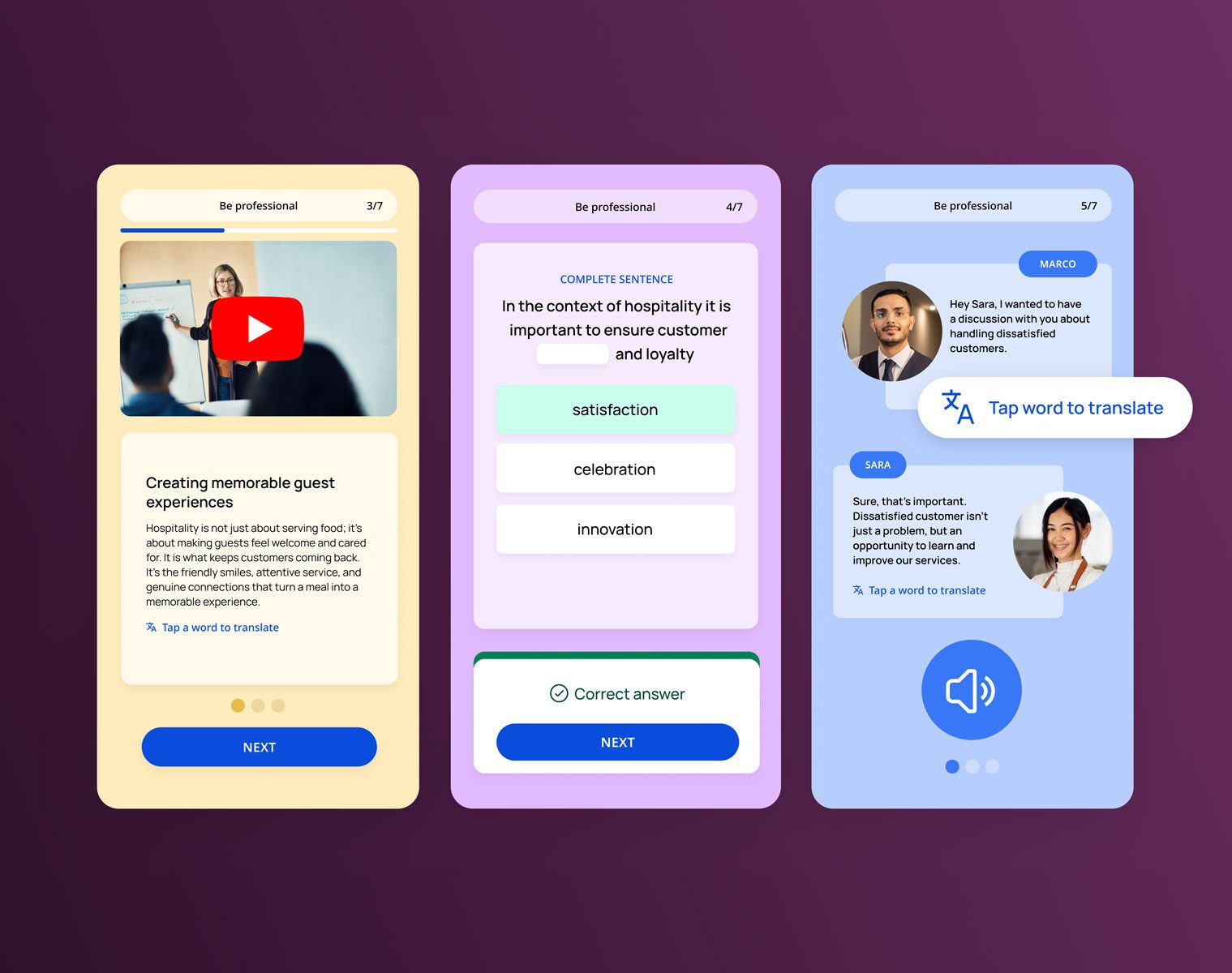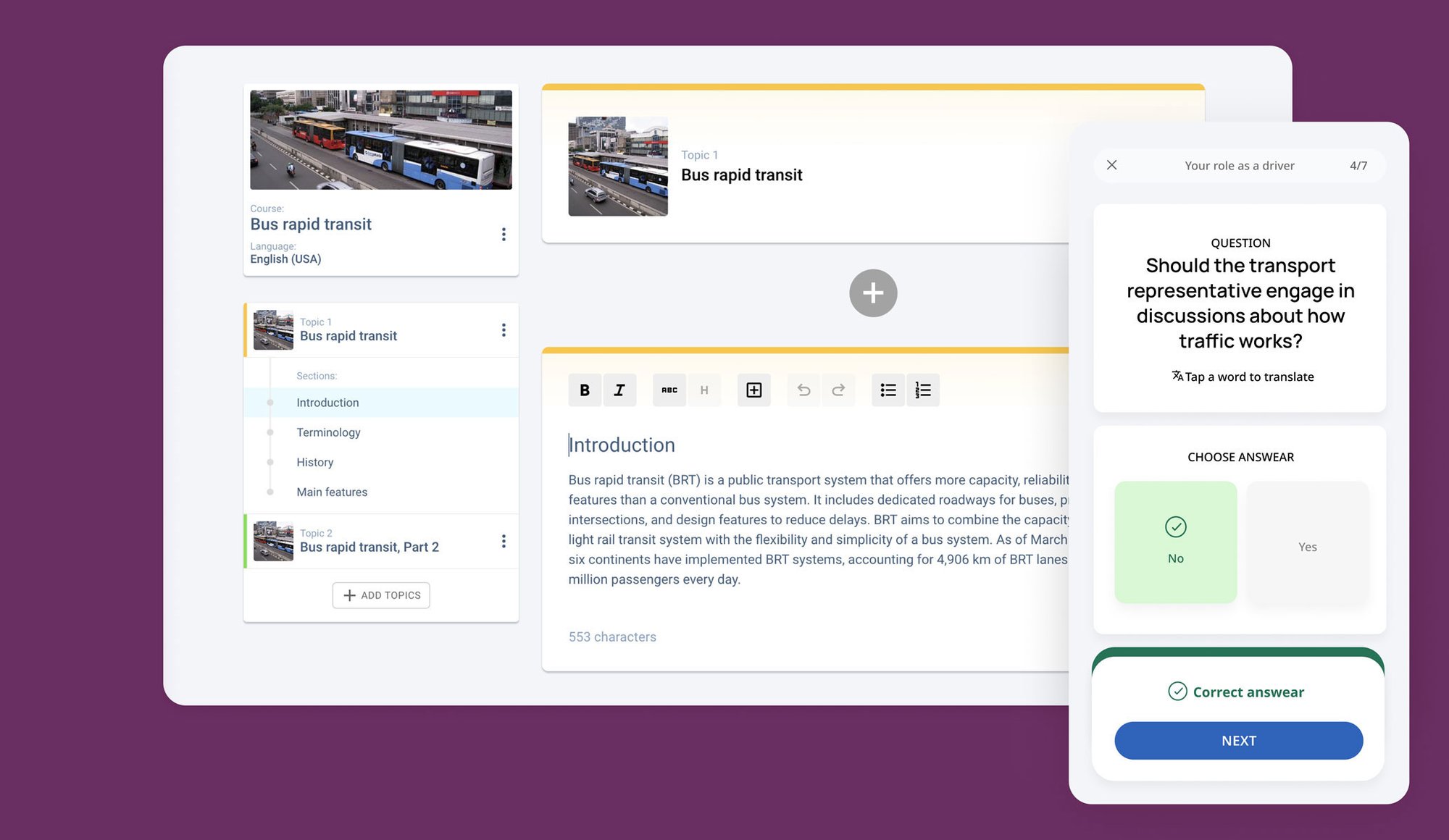The foundations of employee development and training
First let’s cover the definition of employee training and development. Employee training and staff development are essential elements of a booming business, helping employees grow both in their roles and careers while ensuring the organisation remains competitive. While these terms are often used interchangeably, they have distinct meanings and serve different purposes within a company’s growth and development initiatives.
Definitions and differences
Training focuses on teaching employees the specific skills they need to flourish in their current roles. Training is typically short-term and task-oriented, aimed at improving productivity and efficiency.
Development, on the other hand, focuses on long-term employee growth. Professional development includes initiatives that help employees expand their skill sets, preparing them for future roles and moving toward career advancement. Together, training and development create a well-rounded approach to employee improvement, growing a stronger, more capable workforce.
Key components of a successful training program
A successful training and development program includes several critical elements. First, it should be aligned with the company’s goals, ensuring that the skills being taught directly contribute to business outcomes. It should also be engaging and adaptable, using the likes of AI (artificial intelligence) training software to tailor learning. Finally, an effective training program includes regular courses or assessments to measure progress and ensure continuous improvement.
Understanding your workforce’s needs
Understanding your employees' specific needs is crucial to creating meaningful training and development programs. This involves conducting skills assessments, gathering feedback from staff, and considering both short-term job requirements and long-term career aspirations. By aligning your training program with your workforce's unique needs, you can grow engagement, boost morale, and ensure your efforts deliver tangible results.
Planning and strategy for development and training
A well-thought-out training and development strategy is the backbone of a successful workforce improvement initiative. By setting clear objectives, designing an effective approach, and considering budget constraints, businesses can ensure their efforts deliver meaningful training and development opportunities.
Setting objectives for your training program
The first step in developing any training program is setting clear, measurable objectives. These objectives should align with both the short-term and long-term goals of your organisation. For example, you may aim to improve customer service skills, boost productivity, or prepare employees for leadership roles. Well-defined objectives provide direction and also serve as benchmarks for evaluating the program’s effectiveness. Consider the specific skills or behaviours of staff you want to improve and ensure that these objectives are communicated clearly.
Designing a training and development strategy
Once objectives are established, designing a strategy to meet them is crucial. A successful strategy can incorporate blended learning methods, from in person training workshops to digital solutions like AI-powered training modules. Lingio’s AI Course Creator, for example, customises training courses, making it easier to engage employees across various departments. Incorporating diverse learning methods ensures that training remains flexible, adaptive, and interesting for all staff involved.
Budget considerations
Effective programs require investment in areas like content development, trainers, and technology. A good idea is to prioritise budget-friendly software that offers flexibility and scalability, such as AI tools for course creation. If you have the budget, you can incorporate traditional training methods like workshops and mentorship for the best results. The goal is to invest in strategies and solutions that drive meaningful employee growth and deliver a solid return on investment.
Implementing training programs
Once your training and development plan is in place, the next step is to implement it effectively. This involves selecting the right training techniques, utilising technology, and measuring the program’s success.
Choosing the right training methods
Selecting the appropriate training methods depends on your objectives and the specific needs of your employees. Traditional methods like in-person workshops, mentoring, and role-playing are still highly valuable for hands-on skills and team-building. However, modern approaches such as e-learning, video tutorials, and microlearning training modules offer flexibility, allowing employees to learn at their own pace and from any location. Blended learning combining both traditional and digital methods often delivers the best results by catering to different training preferences.
Leveraging technology in training
Technology is revolutionising employee training by making it more interactive, personalised, and accessible. Learning Management Systems (LMS) and e-learning platforms enable companies to deliver training remotely, track real-time progress, and update content easily. Lingio’s AI-powered platform is an example of how technology can tailor courses to specific needs. By using AI in learning and development to assess employees’ knowledge gaps and deliver customised training, Lingio helps organisations streamline training efforts and ensure that each employee receives the support they need to excel.
Measuring training effectiveness
It's crucial to measure your training programs' effectiveness to ensure they deliver value. Completion rates, employee feedback surveys, and performance assessments provide insight into how well the training is resonating with your team. Tracking key metrics such as productivity improvements, employee retention, and engagement levels helps you evaluate the program’s overall impact and make data-driven adjustments for future success.





